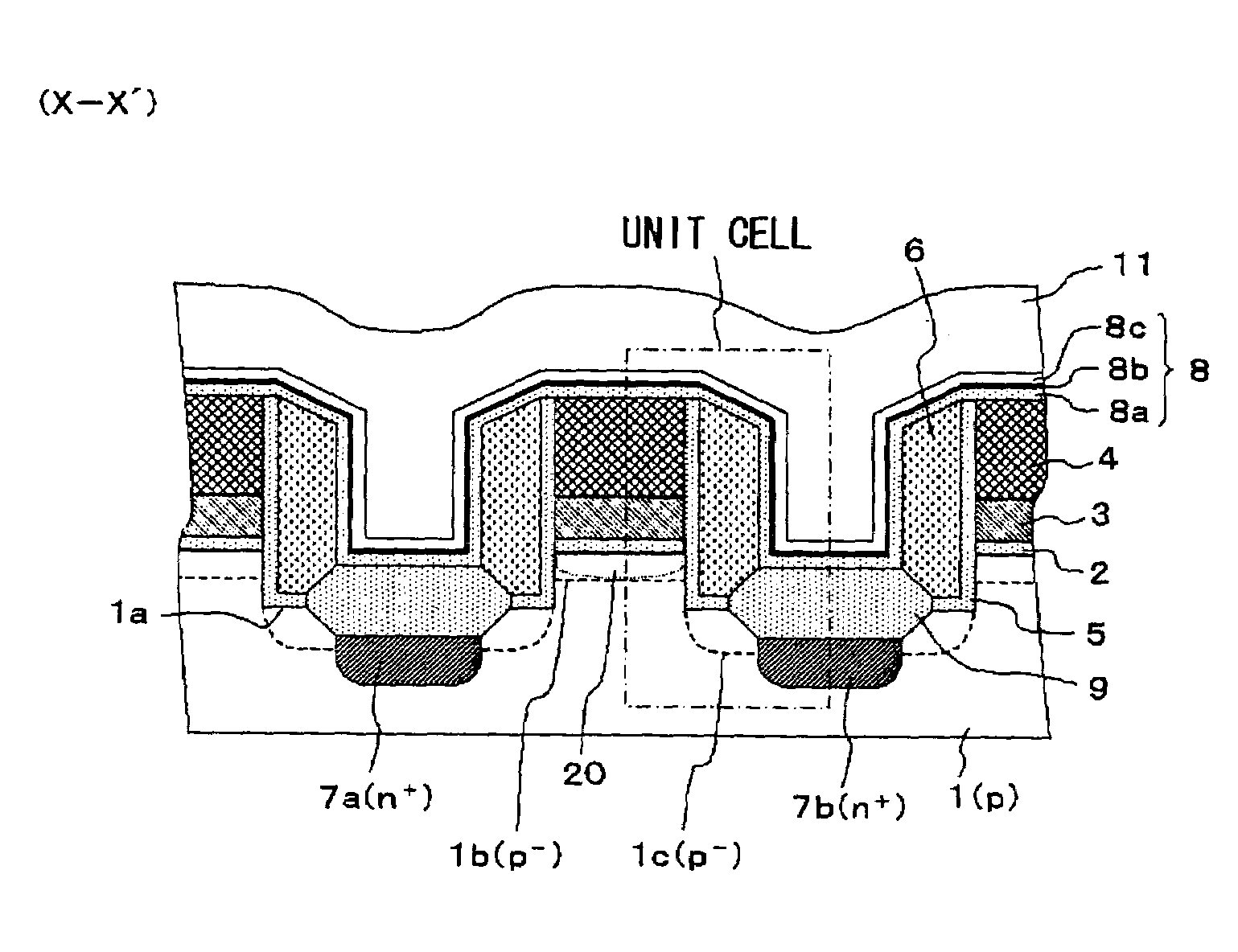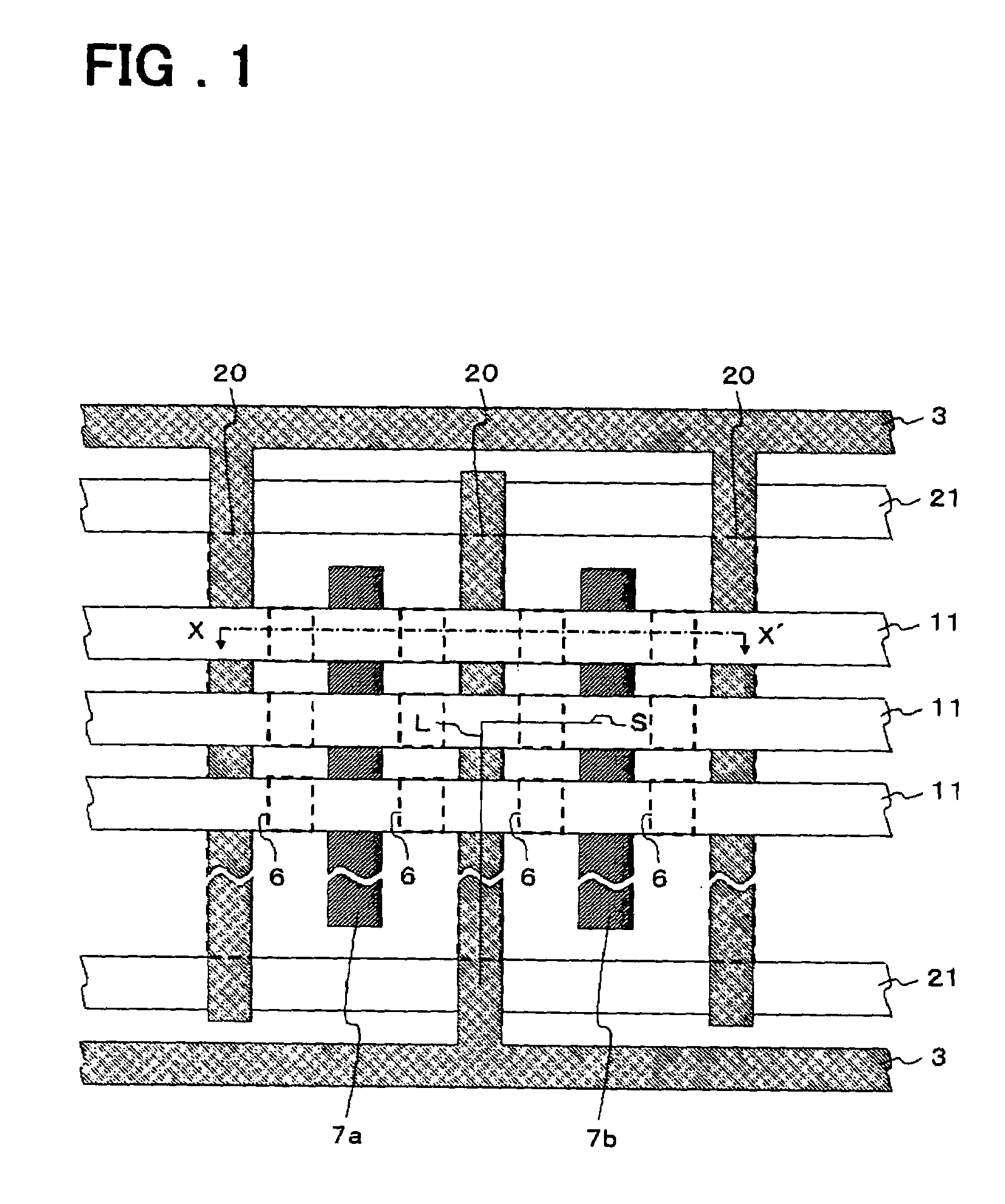Semiconductor memory device
a memory device and semiconductor technology, applied in semiconductor devices, electrical devices, instruments, etc., can solve problems such as difficult control of leakage, and achieve the effects of reducing leakage from memory cells, and effectively lengthening the channel
- Summary
- Abstract
- Description
- Claims
- Application Information
AI Technical Summary
Benefits of technology
Problems solved by technology
Method used
Image
Examples
embodiment 1
[0041]The semiconductor-memory device of a first embodiment of the invention will be explained using the drawings. FIG. 1 is a partial plan view that schematically shows the construction of the semiconductor-memory device of a first embodiment of the invention; and FIG. 2 is a partial cross-sectional view of the section X-X′ in FIG. 1 that schematically shows the construction of the semiconductor-memory device of a first embodiment of the invention. FIG. 1 shows a semiconductor-memory device that comprises a plurality of memory cells, however, here only one of those memory cells will be explained.
[0042]The semiconductor-memory device is a non-volatile semiconductor-memory device that stores 2 bits of information per cell. The semiconductor-memory device comprises: a substrate 1, insulating film 2, selector gates 3, insulating film 4, insulating film 5, floating gates 6, first diffusion areas 7a, second diffusion areas 7b, insulating film 8, insulating film 9, control gates 11 and th...
PUM
 Login to View More
Login to View More Abstract
Description
Claims
Application Information
 Login to View More
Login to View More - R&D
- Intellectual Property
- Life Sciences
- Materials
- Tech Scout
- Unparalleled Data Quality
- Higher Quality Content
- 60% Fewer Hallucinations
Browse by: Latest US Patents, China's latest patents, Technical Efficacy Thesaurus, Application Domain, Technology Topic, Popular Technical Reports.
© 2025 PatSnap. All rights reserved.Legal|Privacy policy|Modern Slavery Act Transparency Statement|Sitemap|About US| Contact US: help@patsnap.com



